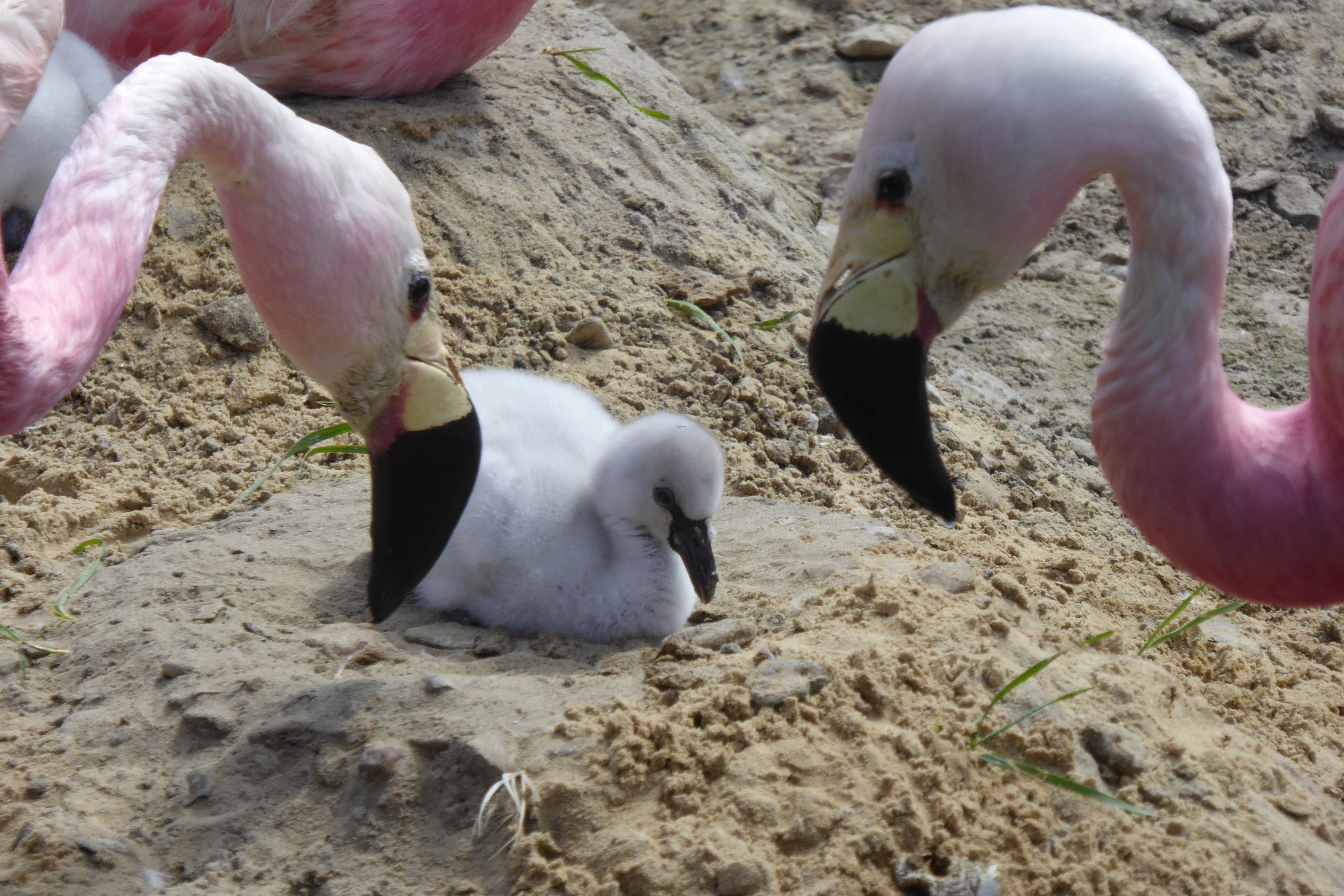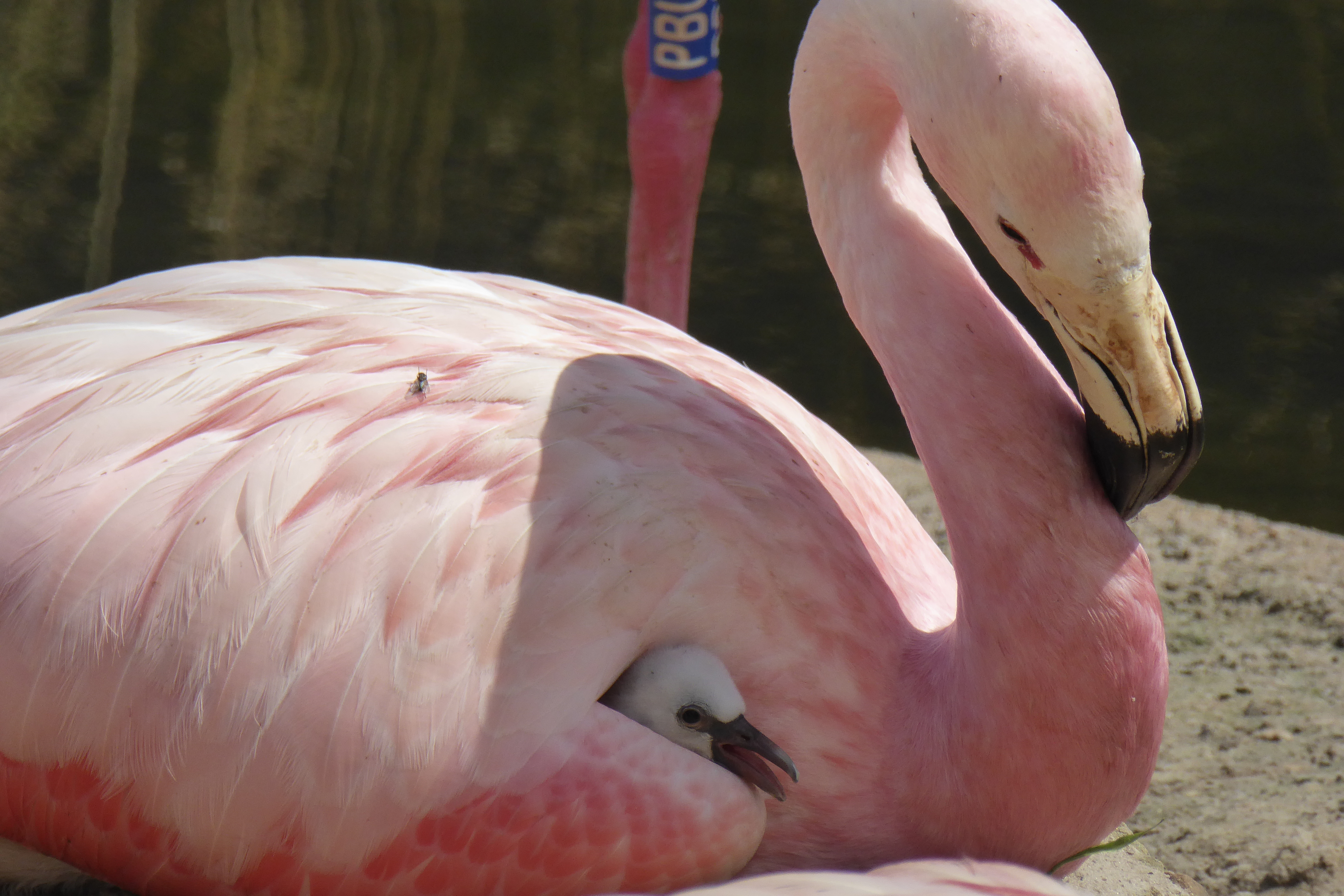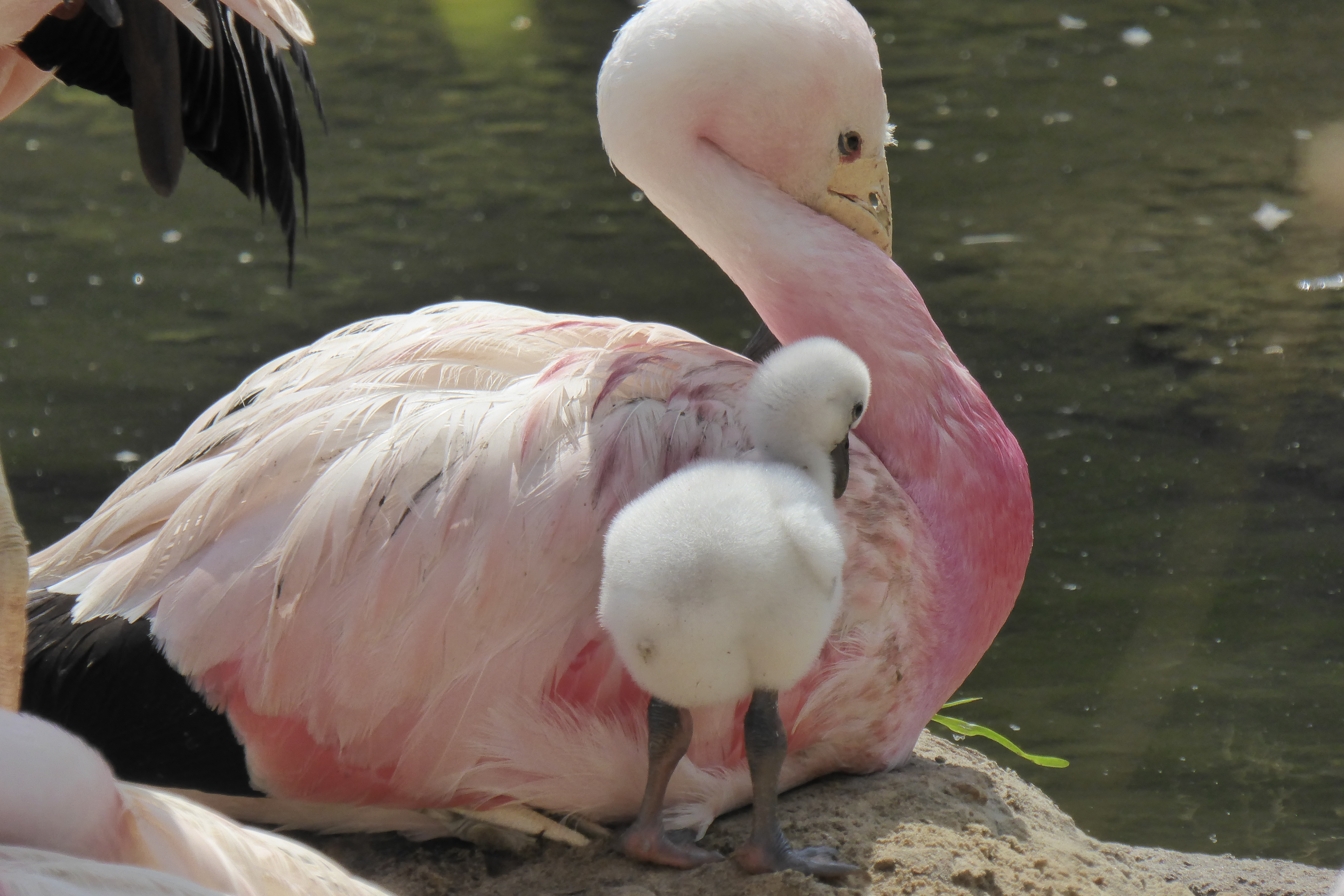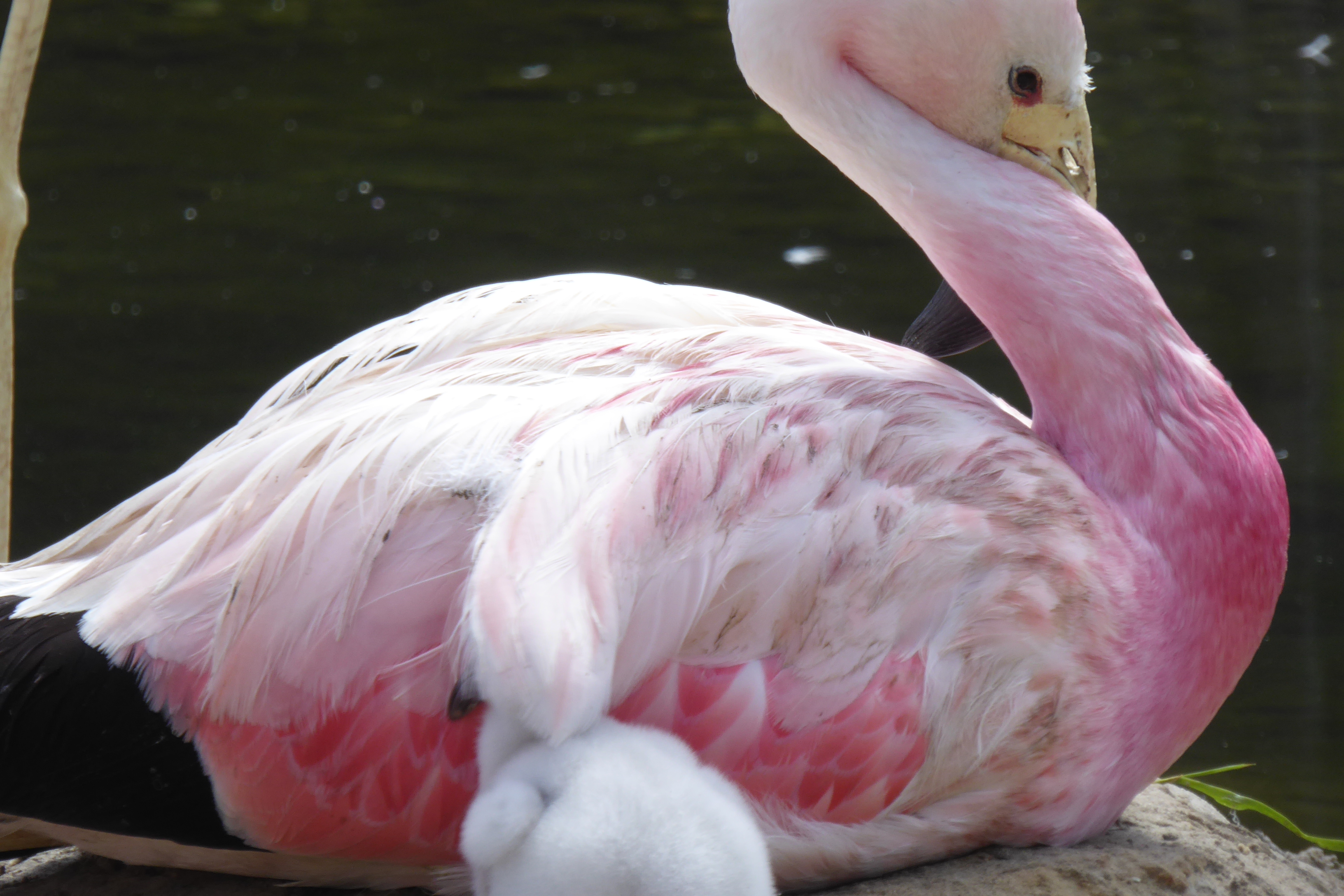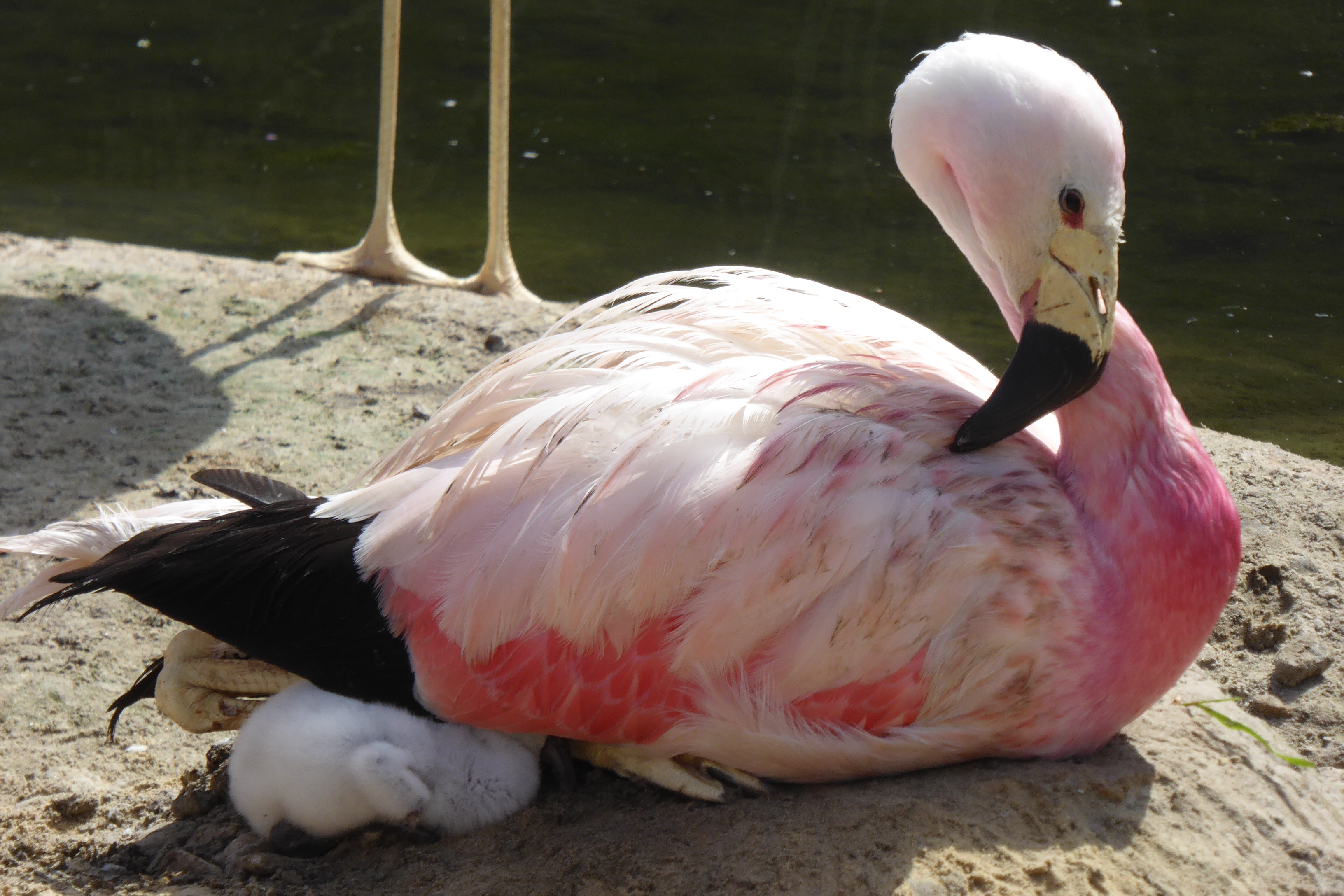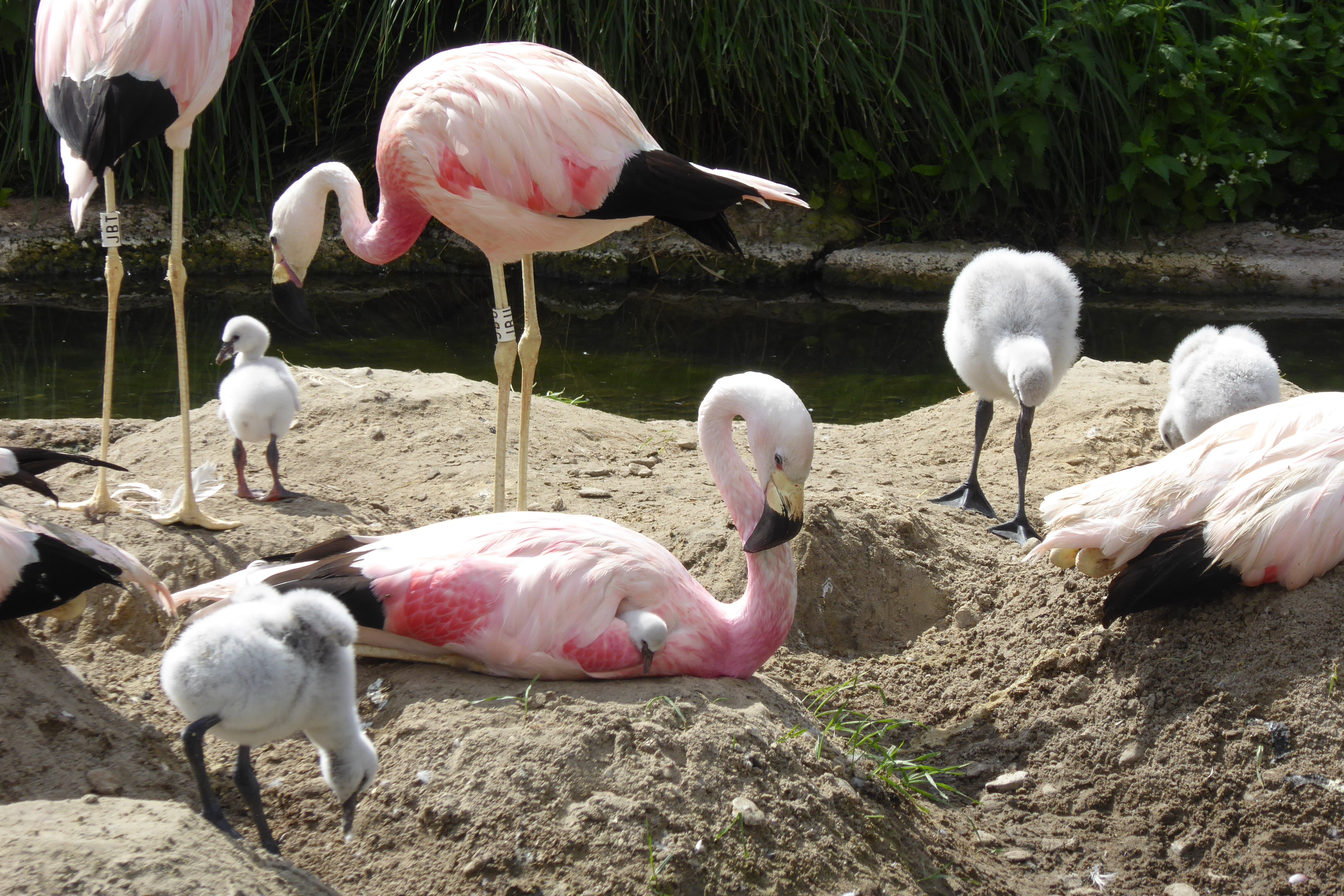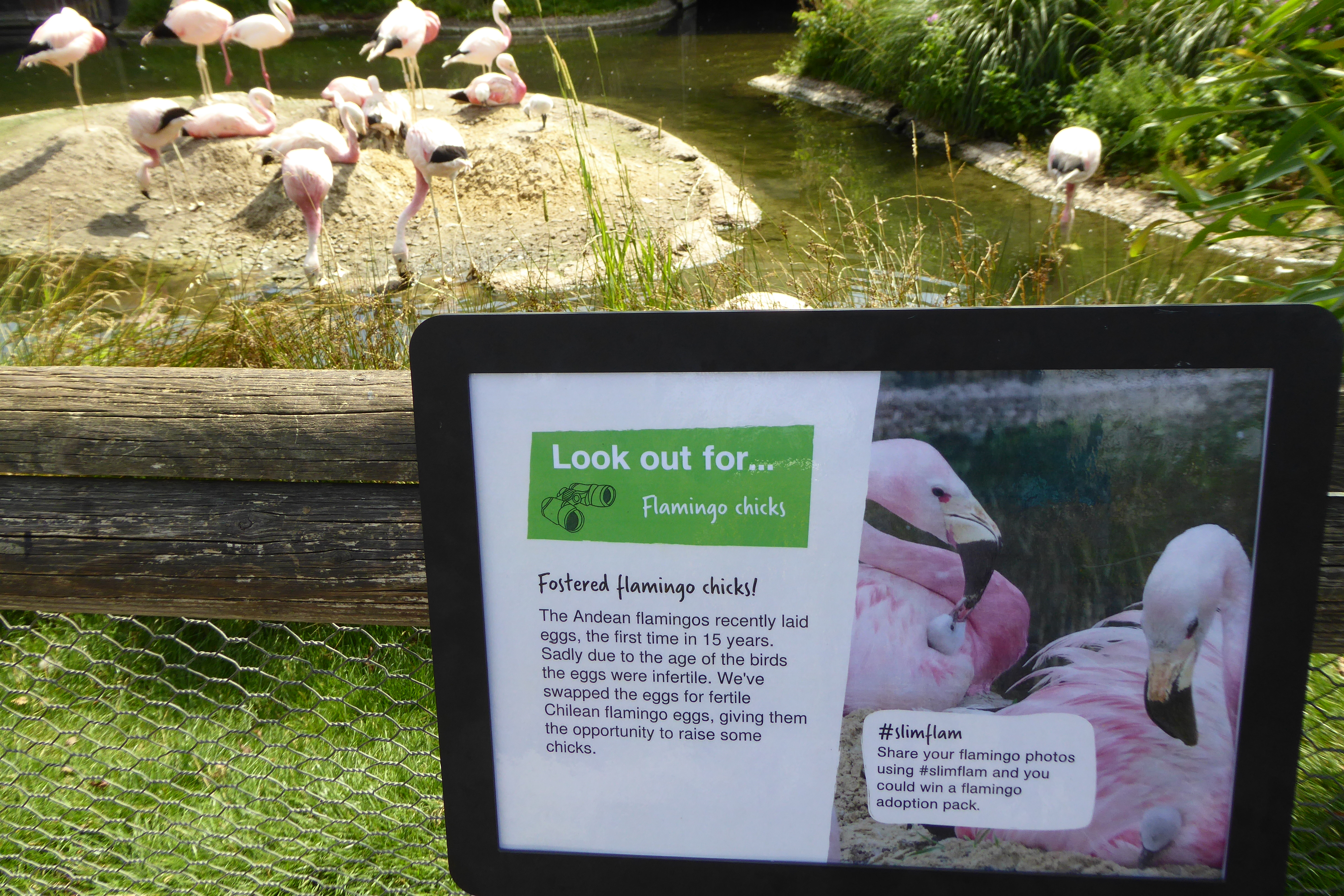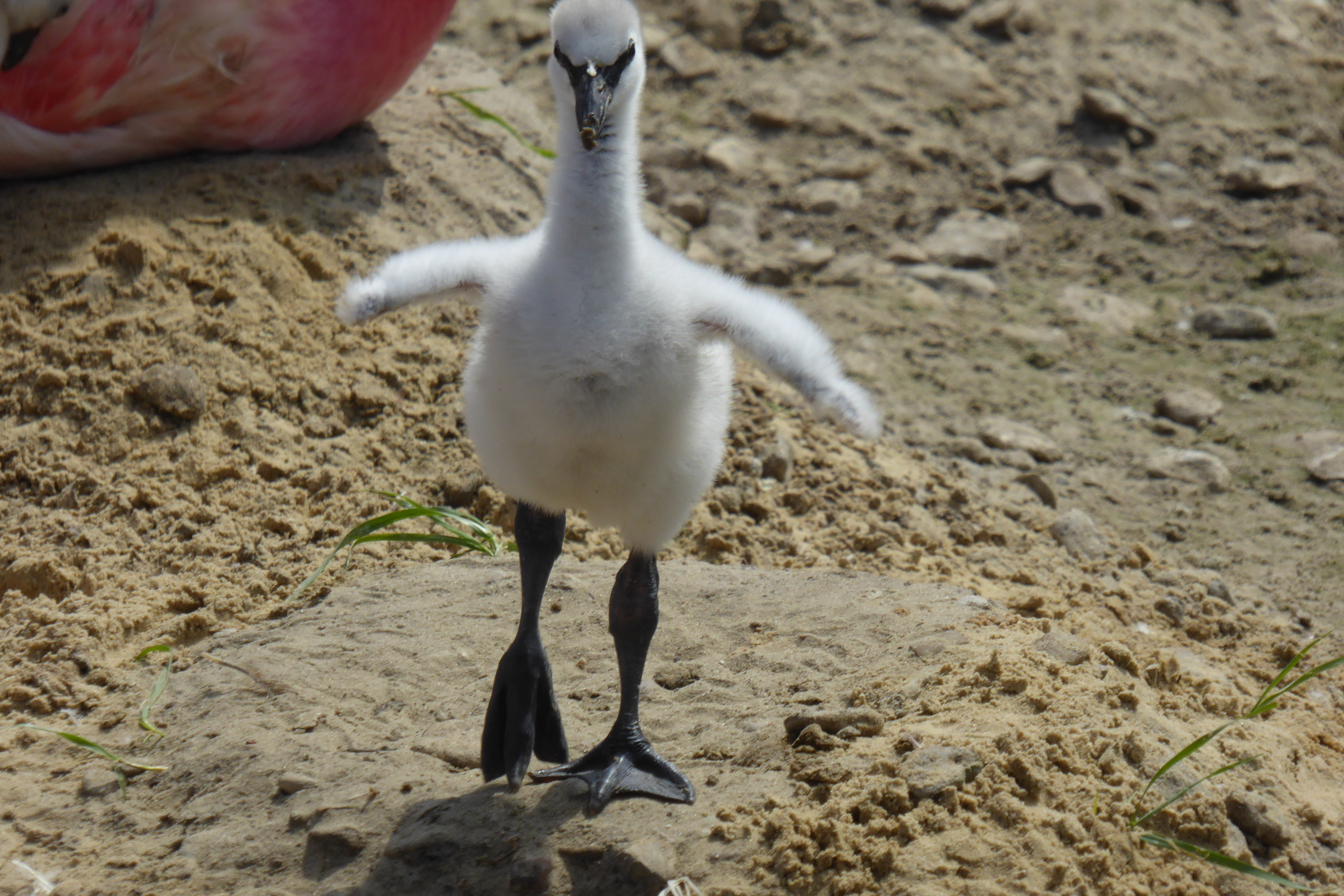Fostering flamingo chicks- Andeans do it best
For those following the fascinating story of the Andean flamingos' breeding exploits this summer, here is an update on their current activities. Six Chilean flamingo chicks are now residing with their doting foster parents. Another bird is currently sat on a dummy egg, but this flamingo is not the most dedicated (shall we say) to its nest mound so it's likely that six will be the maximum number of chicks seen with these birds. But this still provides the closest views of baby flamingos, mingling in their creche, that you can get at WWT Slimbridge this summer.
Phil and Sparky have been carefully monitoring the birds' nesting activities and how well they have been sitting on the dummy eggs. It's important to have groups of fostered chicks of a similar age when growing up. This allows them to creche together more fluidly and creates a natural social group. The first three Chilean flamingo eggs were swapped in at the same time, and the other three hatching eggs also went back close together too. So two lots of ages of chick will be present- slightly older chicks that younger chicks can use as a guide for "how to be a flamingo". After all, not all chicks will hatch at the same time in a wild flock, so the WWT aviculturists create a natural system.
WWT aviculturist Tanya sent over some photos of dummy to real egg swapping action. See the photos below.
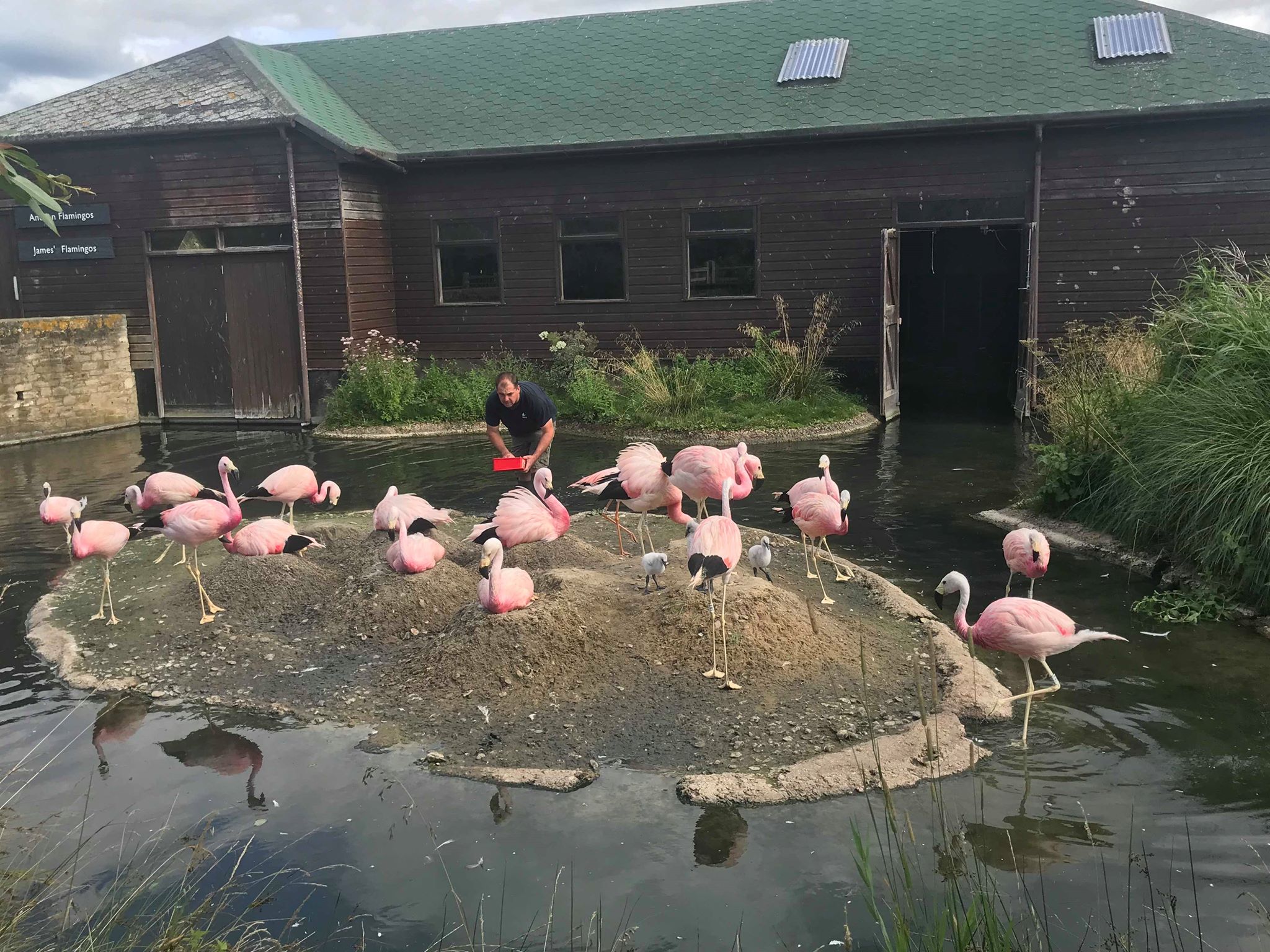 Creeping up on sitting birds and moving quietly but deliberately, Sparky is able to sneak in ready-to-hatch Chilean flamingo eggs under sitting Andean flamingos.
Creeping up on sitting birds and moving quietly but deliberately, Sparky is able to sneak in ready-to-hatch Chilean flamingo eggs under sitting Andean flamingos.
Flamingos make excellent parents. They invest a lot of energy in a large egg (which provides lots of highly nutritious yolk for a growing chick) and they sit on their egg for a long time (a month or there abouts). Given that they then produce crop milk internally to feed their chick, and spend a long time dripping this directly into their chick's bill, they really are built for being dedicated mothers and fathers. So it's really nice that the Andean flamingos have been able, thanks to "flamingo adoption agency skills" of Phil and Sparky, to rear some youngsters, given all of the effort they went to in building some lovely nest mounds.
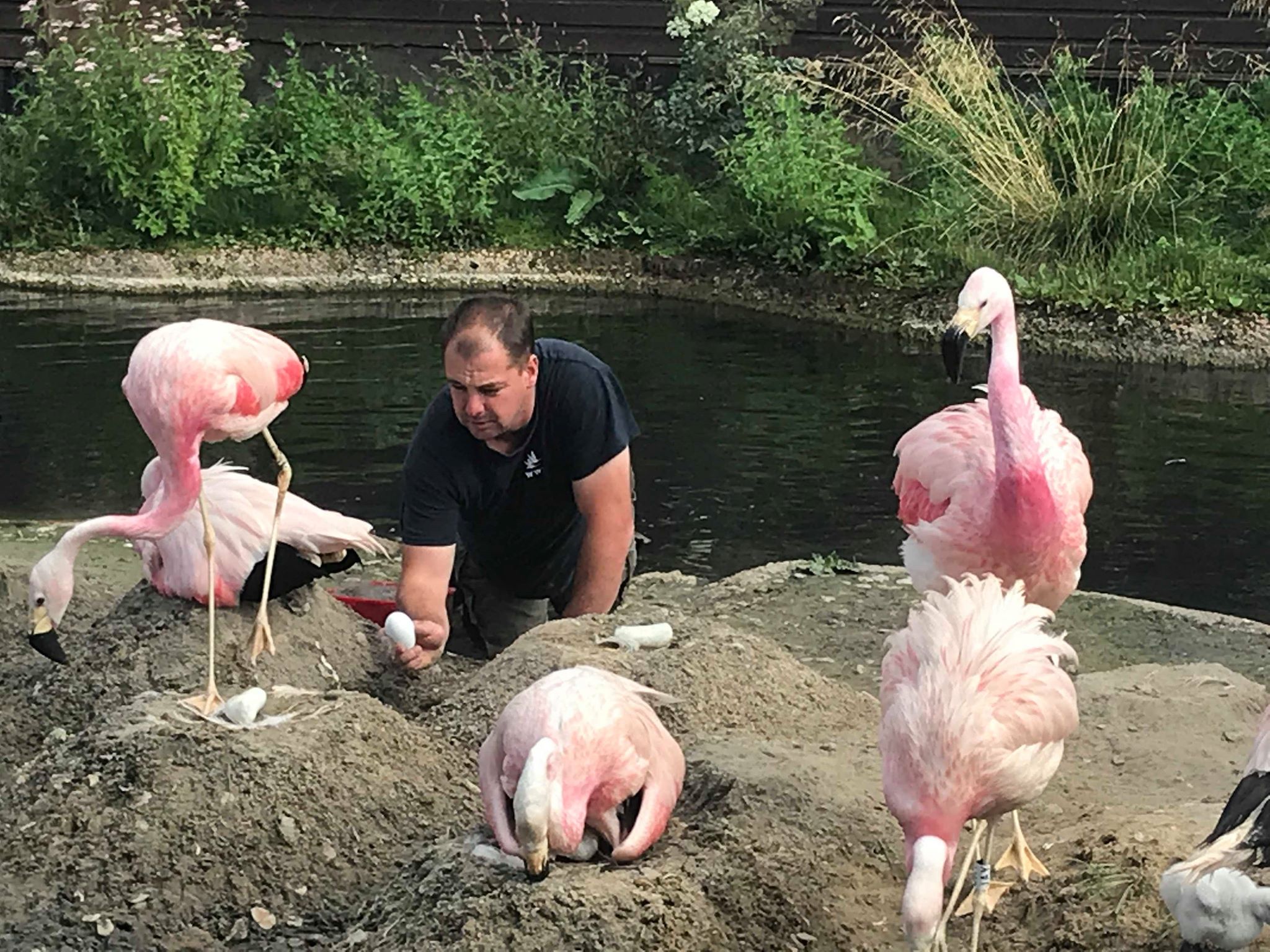 And with the bird very relaxed and seemingly unaware of what is about to happen, Sparky swaps the dummy egg with a Chilean flamingo egg that will hatch in a few hours time.
And with the bird very relaxed and seemingly unaware of what is about to happen, Sparky swaps the dummy egg with a Chilean flamingo egg that will hatch in a few hours time.
When a chick is first hatched, and still wobbly on its pink, squidgy legs, it stays snug and warm under its parent for safety. You will still be able to see that a chick has hatched because it will poke its head out of the corner of the parent's folded wing. The parent flamingo will sit tight, and ensure that the chick is kept safe so that its legs can recover from being folded inside the shell and eventually allow it to walk around.
As chicks grow stronger and can stand without wobbling, they get more active and will be seen more commonly without their parent sitting on them. Parent won't be too far away however, and will after stand on the nest mound with their chick between their legs.
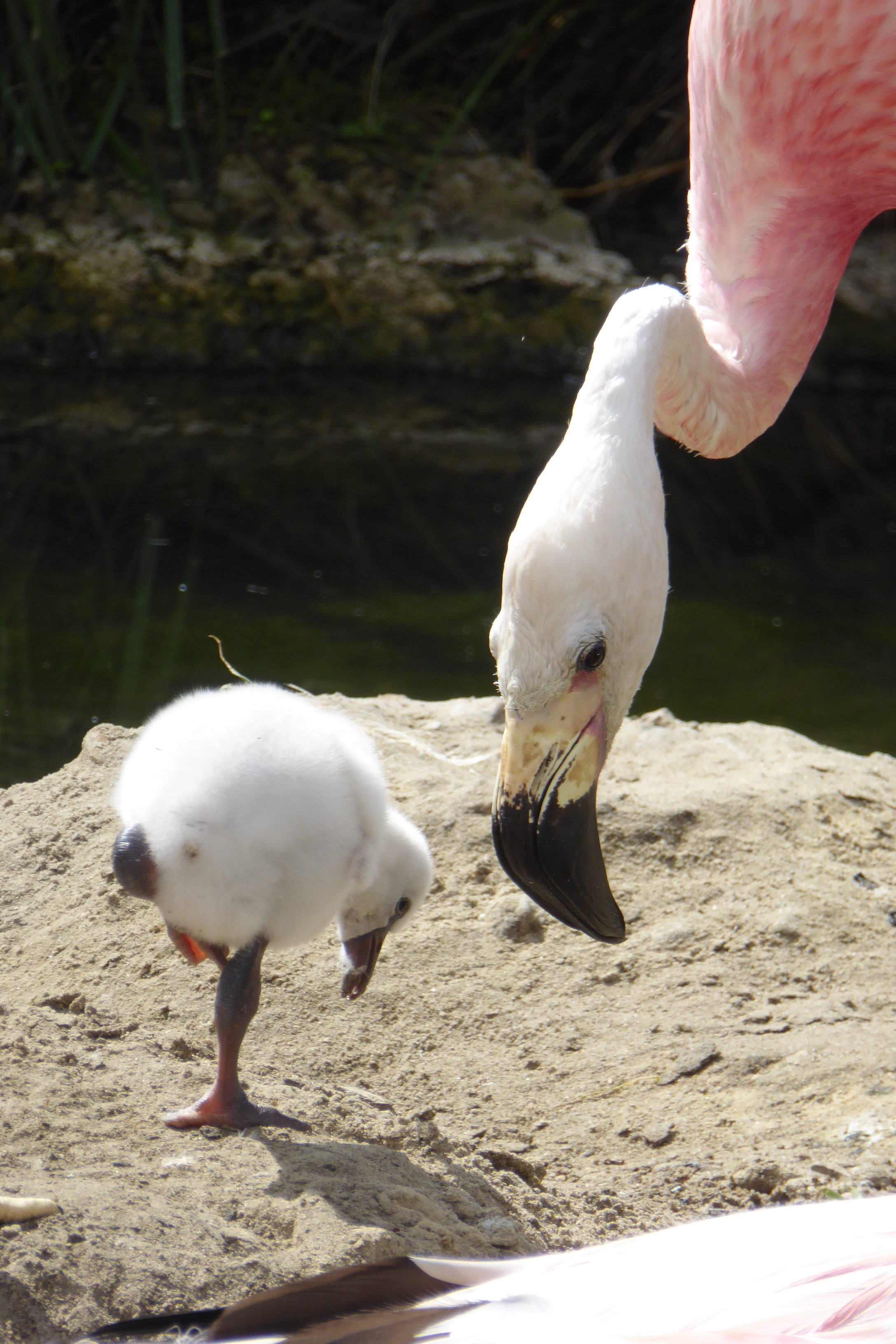 "Look mum! I can stand on one leg too!" A chick of a week or so old practices the quintessential flamingo pose under the watchful eye of a parent female.
"Look mum! I can stand on one leg too!" A chick of a week or so old practices the quintessential flamingo pose under the watchful eye of a parent female.
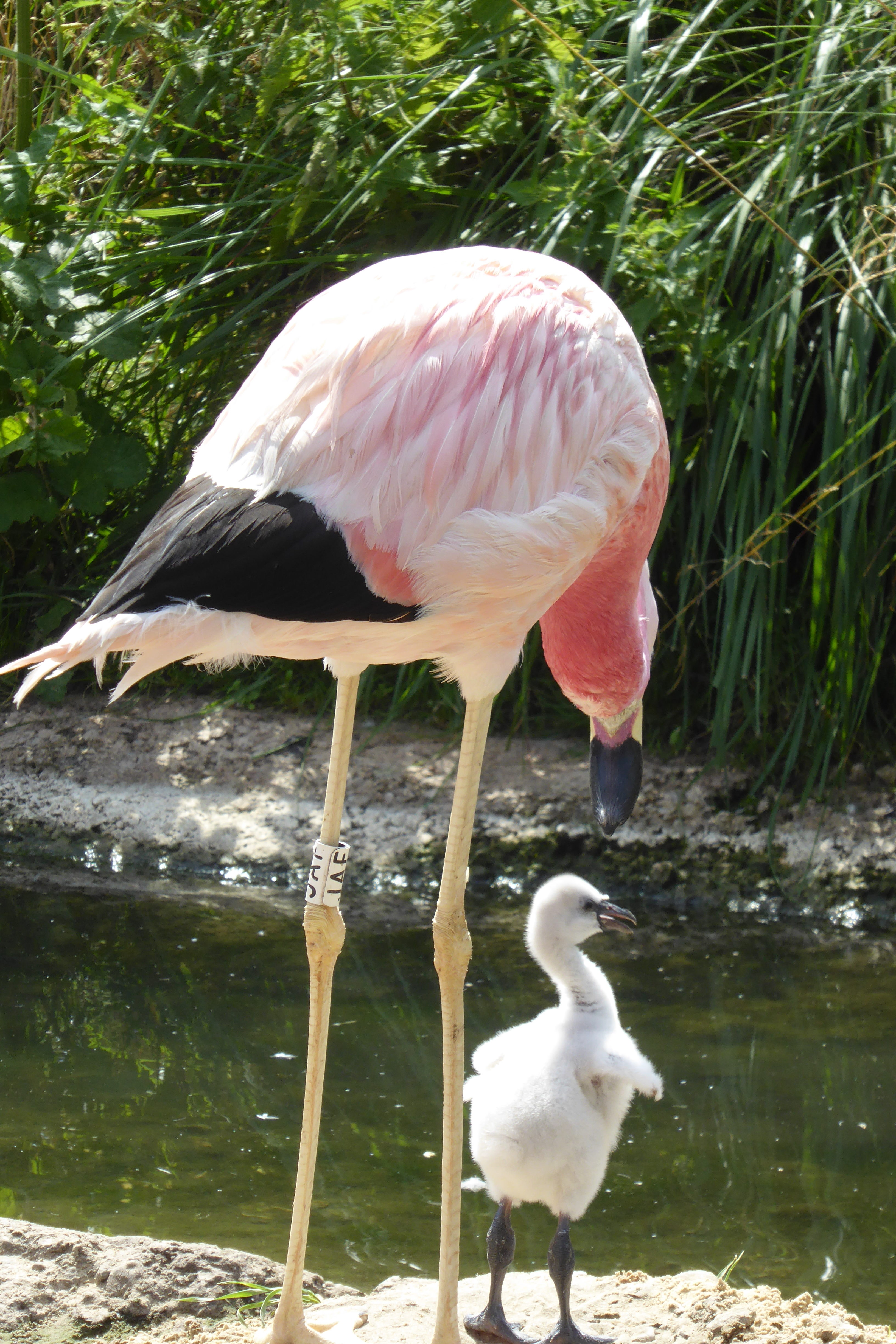 The regular flamingo parenting position. When a chick doesn't need constant brooding, but is also still confined to the top of the nest mound. Both parents share the care of their chick with the same diligence and responsibility.
The regular flamingo parenting position. When a chick doesn't need constant brooding, but is also still confined to the top of the nest mound. Both parents share the care of their chick with the same diligence and responsibility.
And when standing because too tiring, and you need a but of comfort you can always bury back into mum or dad's feathers for some TLC. That's if your parent is keen to oblige... The female flamingo in the three photos below was less than impressed with her offspring's adventures. I watched for around ten minutes as the chick couldn't decide if it wanted to stay out and play, or come home and snuggle up for a snooze. Needless to say, she tried to make the decision for it, but the chick was determined to still be annoying!
And the current situation is shown in the photo below. Five chicks visible, including one with pink legs that has just started to walk around and another newly-hatched chick with its head emerging under the parent's wing. You can see in this picture that the three older chicks are already much more keen to explore and go adventuring- it doesn't take long for chicks to find their feet (as it were). Eventually all six chicks will form a creche and the adults can have more time for feeding and preening away from the needs of their young charges.
Chilean flamingos (scientific name Phoenicopterus chilensis) and Andean flamingos (scientific name Phoenicoparrus andinus) occur in the same habitat in the wild and can eat the same types of food. Whilst they do not share the same scientific classification they are the same size and parent their chicks in the same way. Therefore there is no welfare or chick development issues with letting Andean flamingos parent Chilean babies. From a behavioural viewpoint, they are a close enough match for the Chilean flamingo chicks to develop normally. And as these young Chilean flamingos have a flock of their own kind to go back into when they have adult feathers, they will eventually pair up with a bird of their own species too. So it's win-win all around.
And to finish, a couple of videos of the birds with their foster chicks. This first clip of incubating birds with very small chicks, only a few days after hatching.
And in this next clip, a change in the behaviour of the parents as chicks grow up and get older.
And finally, Phil sent me a lovely clip from his Go-Pro camera, so you get a real feeling of what it's like to be a baby flamingo in this flock.
If you have been to visit the wonderful Andean flamingos and their cute foster families, please share your photos and experiences with us. See the photo below for the #slimflam hashtag for social media.
I hope you have enjoyed reading this extraordinary story on everyone's favourite flock of WWT flamingos. They really are very special birds.
